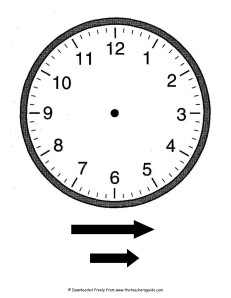Grades 2-3: Reading Analog and Digital Clocks
Subjects:
Common Core, Math
Grades:
2, 3
In this lesson, students will practice reading analog and digital clocks. This lesson also sets the stage for a fun BINGO game that can be played throughout the year.
Goal:
Students will read and write time on a digital and analog clock to the nearest five minutes.
Common Core Standards
CCSS.2.MD.C.7 Tell and write times from analog and digital clocks to the nearest five minutes, AM and PM.
Objective:
Students will read and write times from analog and digital clocks to the nearest 5 minutes.
Materials
• Prepare a whiteboard or large paper with a t-chart that has columns labeled Analog and Digital for use with the whole class.
Prepare enough for each student in your class:
• Hotchalk.com Clock time (prepare these ahead of time by filling in the times that you want students to identify)
• Hotchalk.com TIME game cards
• BINGO chips to use when students play TIME
• Scissors and glue
Lesson Introduction (5 minutes)
Remind students that when we count by fives we start at zero and count up by five. Have students stand in a circle. Model counting by fives to 60 and pair each number with a movement. For example, start by tapping your head and then tap your shoulders, knees, toes, toes, knees, shoulders, etc.
Mini Lesson (10 minutes)
On the whiteboard, or on a paper on the document projector, draw a clock that is large enough for a student to stand in the middle. Add numbers around the clock. Write “Analog” on the top of the clock. Remind students that clocks have a short hour hand and a longer minute hand. When the minute hand goes around the clock, there are five minutes in between each number on the clock. Model a few times, explaining how we use the hour hand and the minute hand.
Digital and Analog Guided Practice (10 minutes)
Tell students that there are two ways to show time, the analog clock, which you have just been practicing, and a digital clock. The digital clock uses only numbers to show time. Show students examples of digital clocks. Post the t-chart with digital and analog clocks on it. Pull a time card with a digital or analog clock on it. Have students sort the times according to the type of time it is. As you post them, for each option, write how an analog or digital clock would record the same time, so that you have a model of each type of clock. Ensure that students identify that analog and digital clocks tell us the same information.
Digital and Analog Independent Practice (10 minutes)
Now, tell students that they will be working on their own t-chart. Have students work independently or in pairs to select and sort times onto their own t-chart.
Create TIME Bingo Card (10 minutes)
Pass out blank TIME cards. Read out sixteen different times. Have students record either the analog or digital time. Students can put each time wherever they want (they don’t have to go in order) to create their own TIME card. (Save these TIME cards for later use.)
Play TIME (10 minutes)
Once students have their TIME cards, play a few rounds of TIME as a whole group (this activity can become a center activity after students have mastered it). During the game, circulate and take note of which students are able to read the times independently and easily and which require assistance. As students become familiar with the game, they can lead the TIME games as well.
I liked this lesson plan because time is a major concept for students with special needs. Time is more of an abstract concept and can be difficult for students to understand. I believe lessons on time should be a weekly activity. The only change I would make to this lesson is making laminated movable analog clocks for each student in the class. That way they can physically hold the clocks and move the hands to specific times that are asked of them.





